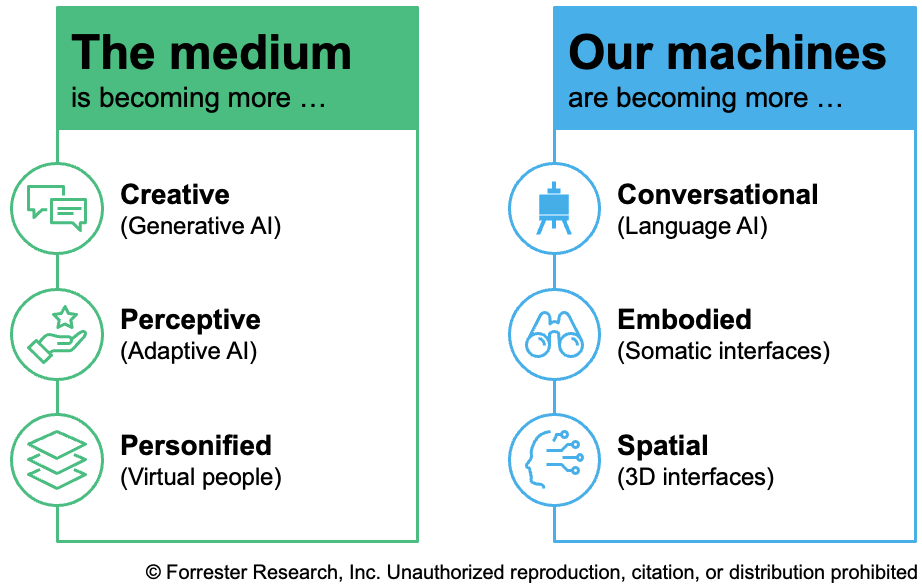Six Technologies Will Make Digital Experiences More Humanlike (And GenAI Is Just One Among Them)
If you’re involved in conceiving digital experiences as a strategist, product leader, designer, developer, or in any other capacity, generative AI (genAI) is sparking your imagination — and for good reason. It’s igniting deep changes in the ways people interact with devices and the software that runs them.
But genAI is just one of six technologies that are driving major shifts in human-machine interaction, the raw material of all digital customer experience and employee experience. That means you need to understand and anticipate all six of these shifts — not just genAI — and how they will impact your work and your users’ experiences.
With just a little imagination and extrapolation from the early signs of these changes, you can envision how customers and employees will engage with your organization digitally in the future. Digital as a medium, along with our digital machines, will evolve in six domains that will make experiences more humanlike, each in its own way:

Here’s what each of these shifts means and how the early signs of them are apparent now:
- Generative AI makes our machines more creative. It produces new content instead of just retrieving and processing existing content. And most companies are embracing genAI already today — some employees secretly.
- Adaptive AI makes our machines more perceptive. It learns our preferences by observing instead of needing to be told what to do. Already today, subtle features in digital experiences show how they adapt to us.
- Virtual people make our machines more personified. So-called virtual people (aka digital humans) represent organizations as humanlike avatars instead of language-only bots. Early efforts at virtual people are rudimentary but already available for interactions with customers and employees.
- Language AI makes the medium more conversational. It communicates in the way that humans prefer. And although conversational experiences are in their infancy, they’re widespread already.
- Somatic interfaces make the medium more embodied. They track people’s hands, heads, eyes, and more to facilitate interactions. In fact, most people’s phones are already tracking their eyes, though most don’t realize it.
- Spatial interfaces make the medium more physical. They present content in 3D, similar to our physical experiences. Designers have sprinkled 3D content and UI controls into experiences for years, but it’s going to become much more widespread.
If you’re interested in learning more about these six shifts, their impact, and what to do about them, read my new report (published today): The Humanlike Future Of Digital Experiences.
Let’s Connect
If your company has expertise to share on this topic, feel free to submit a briefing request. And if you’re a Forrester client and would like to ask me a question about the topic, you can set up a conversation with me. You can also follow or connect with me on LinkedIn if you’d like.
